The following lines are the result of collaborative work, under the leadership of Justin Seitz. There are many of us working together, including Heartbroken and Nanardon.
OSINT is an acronym for Open Source Intelligence. It’s a set of investigative techniques, allowing information to be retrieved from so-called open sources. Used by journalists, by police or in cybersecurity, OSINT can help to find information but it can also be used to protect yourself from malicious people.
Violences against people, especially against women increased and diversified. Harassment, raids, doxxing, revenge porn by video or by pictures, identity theft or school harassment, etc.
How to react? How to prevent them? Our goal is to give you simple resources, without the needs for special knowledge.
It doesn’t substitute support groups, law enforcement, health professionals or lawyers.
We trust you.
You are not responsible.
Facts and situations we will use to illustrate ours kits are criminally and civilly repressed.
You are not alone.
The information provided in this article does not, and is not intended to, constitute legal advice; instead, all information, content, and materials available in this article are for general informational purposes only. Furthermore this article was written mainly in regards to French and European laws. Readers should consult their local laws and contact an attorney to obtain advice with respect to any particular legal matter.
The act of knowingly disclosing a person's personal contact information, identity, address or any other information unbeknownst to them and in order to harm that person, is commonly known as "doxxing" or "doxing" (spellings may vary). This disclosure must concern private information, which would not have been discovered otherwise.
For example, if your address is in a public directory, this may not be considered doxxing.
Many Internet users use pseudonyms on the Web. This is not illegal and helps protect their private and professional life. Doxxing happens when the disclosure of information takes place during digital raids, with the aim of overwhelming the victim or causing harm.
Technical aspects
Recording and archiving
As for the digital raids previously mentioned, you should refer to the "Recording and archiving" section of the article because the procedure is the same. Unlike digital raids, after collecting messages, links and timestamps, you will report the content to the relevant platforms as well as to government or police platforms in charge of fighting violence on the Web. The details of the procedure depend on each country and state.
Protect yourself
Here again, you will have to put your various networks in private mode, just to be at peace. Before you do anything else, lock your accounts.
What to do if your phone number has been revealed? For landlines, in the worst case, you can ask your operator to change your phone number. Depending on your telephone operator, there may be additional charges. You can also redirect calls to your cell phone, to better filter them.
Indeed, for cell phones, you can set your phone to receive only calls and SMS from people who are already registered in your phonebook. This option is not native on all phones. Vlad Lee's application seems to have the favor of Android device users. It allows you to block calls, text messages but also to filter according to contacts. For iPhone users, you can set this feature directly in the device.
As for the other contacts, if their calls are legitimate, they will leave you a message on your answering machine. In case stalkers leave you abusive voice messages, save them in your voicemail so they are preserved.
Reporting to the platforms
On Facebook, next to each comment, you have three dots. Click on them and select "Give feedback or report this comment". The social network will give you different options. You can choose "Harassment" directly.
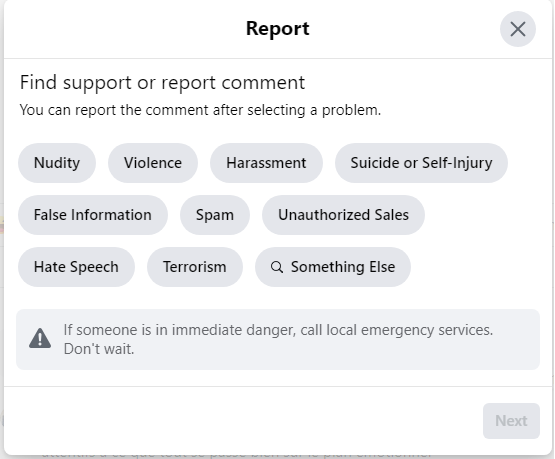
On Twitter, you also have these three dots. Select "Report an issue" and then "It’s abusive or harmful".
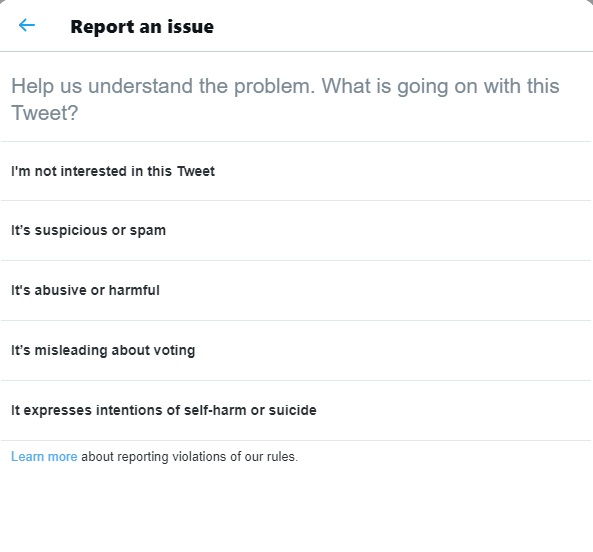
You will have several options to choose from. In case your contact information is revealed, it is the option "Includes private information". At the time of reporting, Twitter will also ask you if it's you or someone else.
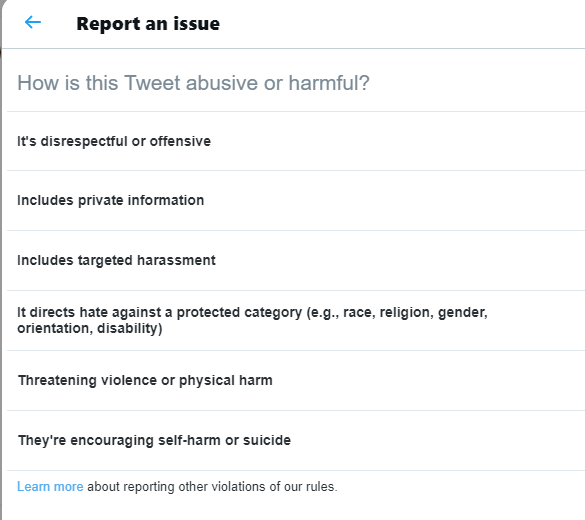
Instagram, like Facebook, does not display this option, but you can use the "Harassment" option. Click on the three dots, then "Report" and then "It’s inappropriate". In the case of private information, this may be considered harassment or bullying.
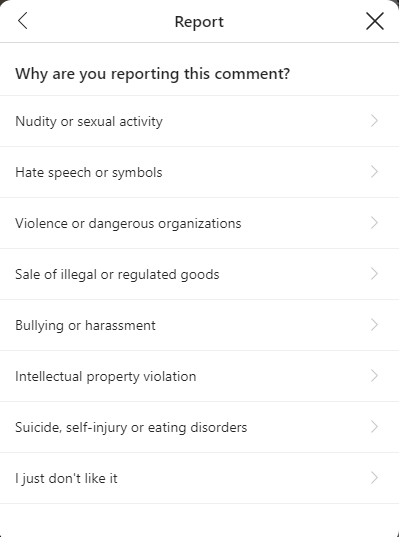
On Tiktok, position the mouse next to the comments to see the famous three dots. The "report" option then appears. Here again, we will opt for "Harassment".
On Discord, each administrator being master on his server, you have to wait for the moderators' good will. Nevertheless, you can report problematic content. Go to this page.
In the body of the message, it is advisable to provide the ID of the message. You will obtain this information by activating the developer mode. Go to your account settings, then to appearance and at the bottom of the page, activate "developer mode".
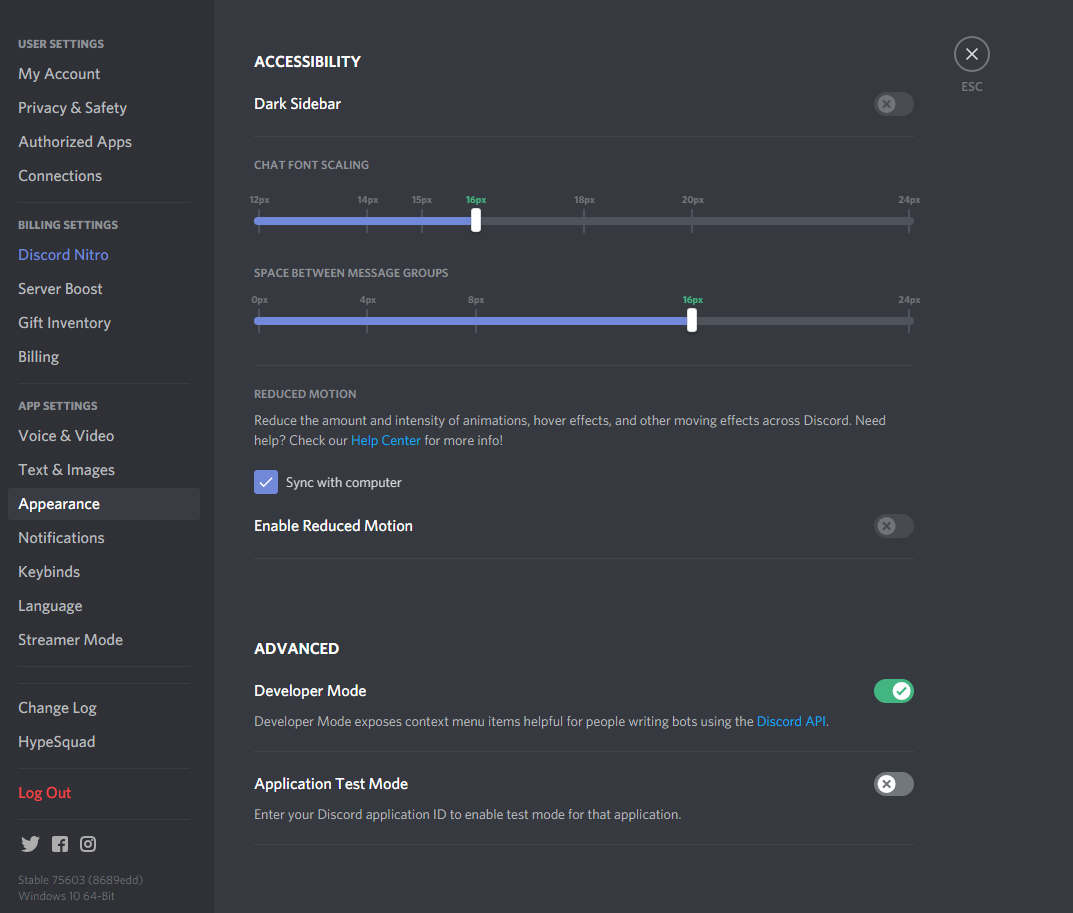
Return to where the message is. Pass the mouse over the message, click on the suspension points and then click on "copy identifier".

The human management of doxxing
Depending on what information was disclosed without your consent, you can choose whether or not to file a complaint. As with digital raids and other cases, this decision is yours. It is recommended that you inform your relatives: family, professional, children's school if the victim is a relative, etc.
It has been observed that Twitter is very reactive when it comes to doxxing, as long as the number of reports made is significant. If someone reveals your personal information via Twitter, do not hesitate to warn your contacts on the platform, so that they report the message and make it disappear.
Ajouter un commentaire